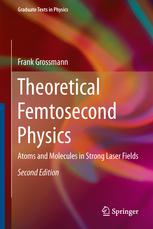

Most ebook files are in PDF format, so you can easily read them using various software such as Foxit Reader or directly on the Google Chrome browser.
Some ebook files are released by publishers in other formats such as .awz, .mobi, .epub, .fb2, etc. You may need to install specific software to read these formats on mobile/PC, such as Calibre.
Please read the tutorial at this link: https://ebookbell.com/faq
We offer FREE conversion to the popular formats you request; however, this may take some time. Therefore, right after payment, please email us, and we will try to provide the service as quickly as possible.
For some exceptional file formats or broken links (if any), please refrain from opening any disputes. Instead, email us first, and we will try to assist within a maximum of 6 hours.
EbookBell Team

4.1
10 reviewsTheoretical investigations of atoms and molecules interacting with pulsed or continuous wave lasers up to atomic field strengths on the order of 10^16 W/cm² are leading to an understanding of many challenging experimental discoveries. This book deals with the basics of femtosecond physics and goes up to the latest applications of new phenomena. The book presents an introduction to laser physics with mode-locking and pulsed laser operation. The solution of the time-dependent Schrödinger equation is discussed both analytically and numerically. The basis for the non-perturbative treatment of laser-matter interaction in the book is the numerical solution of the time-dependent Schrödinger equation. The light field is treated classically, and different possible gauges are discussed. Physical phenomena, ranging from Rabi-oscillations in two-level systems to the ionization of atoms, the generation of high harmonics, the ionization and dissociation of molecules as well as the control of chemical reactions are presented and discussed on a fundamental level. In this way the theoretical background for state of the art experiments with strong and short laser pulses is given. The text is augmented by more than thirty exercises, whose worked-out solutions are given in the last chapter. Some detailed calculations are performed in the appendices. Furthermore, each chapter ends with references to more specialized literature.